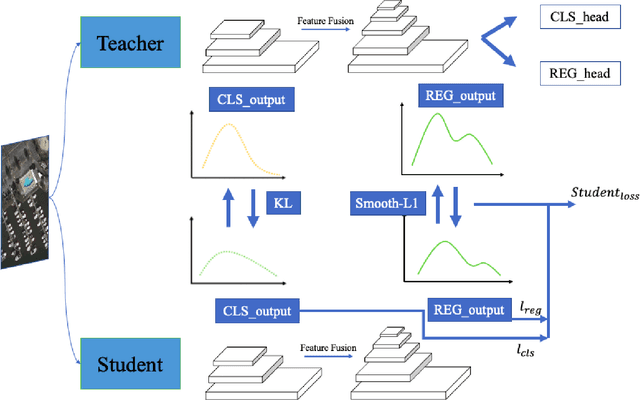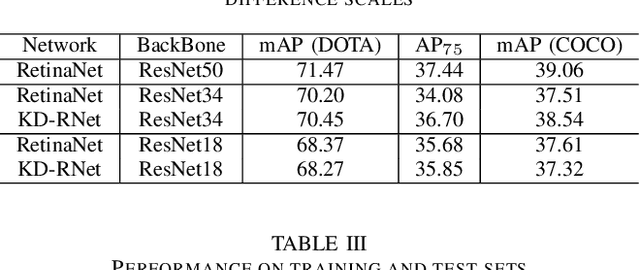Knowledge Distillation for Oriented Object Detection on Aerial Images
Paper and Code
Jun 20, 2022



Deep convolutional neural network with increased number of parameters has achieved improved precision in task of object detection on natural images, where objects of interests are annotated with horizontal boundary boxes. On aerial images captured from the bird-view perspective, these improvements on model architecture and deeper convolutional layers can also boost the performance on oriented object detection task. However, it is hard to directly apply those state-of-the-art object detectors on the devices with limited computation resources, which necessitates lightweight models through model compression. In order to address this issue, we present a model compression method for rotated object detection on aerial images by knowledge distillation, namely KD-RNet. With a well-trained teacher oriented object detector with a large number of parameters, the obtained object category and location information are both transferred to a compact student network in KD-RNet by collaborative training strategy. Transferring the category information is achieved by knowledge distillation on predicted probability distribution, and a soft regression loss is adopted for handling displacement in location information transfer. The experimental result on a large-scale aerial object detection dataset (DOTA) demonstrates that the proposed KD-RNet model can achieve improved mean-average precision (mAP) with reduced number of parameters, at the same time, KD-RNet boost the performance on providing high quality detections with higher overlap with groundtruth annotations.
 Add to Chrome
Add to Chrome Add to Firefox
Add to Firefox Add to Edge
Add to Edge